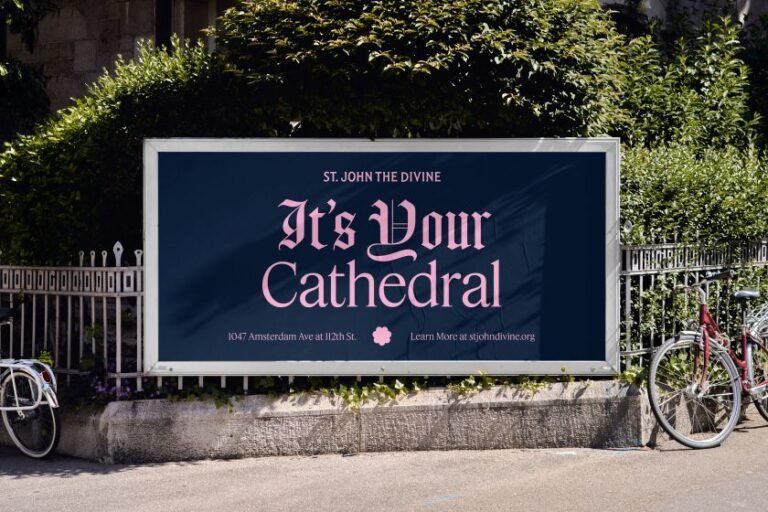

Image licensed via Adobe Stock
Does traditional education still matter in today’s evolving industry landscape, or is self-teaching the way to go? Creative leaders share their views.
It’s not a stretch to say the creative industry has shifted dramatically over the past decade. Social media has democratised access to audiences. AI tools have lowered technical barriers. Success stories of self-taught creators dominate headlines.
As thousands of graduates prepare to enter the workforce this summer, it’s worth asking a fundamental question: Will this traditional career path still hold value in 2025?
According to creative leaders, the answer is nuanced. While the industry has become more accessible, the traditional route of university education continues to offer unique advantages.
The enduring value of structure
Kiser Barnes, partner at Red Antler, believes the traditional path offers something most people need, namely: “structure, mentorship, and space to learn how to think”.
He points out that design isn’t merely about aesthetics; it’s fundamentally about problem-solving and uncovering unexpected solutions. “That’s not always intuitive, but it’s something you can be taught,” he explains. “Some people can teach themselves. If you’re that person, take the non-traditional route and run with it. But most people benefit from structure and being around people who are further along in their creative journey: mentors, guides, critics who can help stretch your thinking and sharpen your instincts.”
This sentiment resonates with Paul Leon, creative director at U037, who highlights the lasting value of formal education. “It gives a chance to explore, learn and grow creatively and personally without the pressures of the real world,” he says. “I’d add that you can lose your job, but a qualification can never be taken away.”
When it comes to recruitment, though, most creative leaders are pretty agnostic. Founder and ECD Cat How offers a typical perspective. “We’re very open to the fact that the best way to learn certain things is by actually doing them in real life, and not necessarily learning through uni,” she says. “But, as we’re so rooted in craft in our profession, I’m also a big advocate for some foundation of sorts.”
The democratisation of creativity
No one is denying, of course, that the creative landscape has transformed. Consequently, notes director of product marketing Matthew Schneider, while traditional avenues like film school and internships remain valuable, “they’re not the only way in any more”.
Matthew points to clients who’ve achieved credibility without formal schooling, teaching themselves and earning their positions through dedication and skill. “With the tech being more accessible and more affordable, it means it’s easier than ever to be self-taught,” he observes.
This technological shift has fundamentally altered the industry’s entry points. Simon Manchipp, founding partner at SomeOne, captures this transformation vividly. “You can launch a career from your bedroom with a cracked copy of Photoshop and a decent Wi-Fi signal,” he says. “Virgil ran Louis Vuitton and Off-White from his iPhone.” (For the uninitiated, Virgil Abloh was a US designer who founded his own line of luxury streetwear, which evolved into the Milan-based fashion label Off-White. He later became artistic director of Louis Vuitton’s menswear collection.)
Simon’s conclusion is clear. “It’s a myth there’s one golden path. 2025’s creatives? They’re plotting their own paths. Some launch brands at 19. Others find their groove at 30. No rules. No ladders. Just leaps.”
Not a binary choice
It’s worth adding that this is not just a binary choice between traditional and non-traditional. Even if you choose the university route, you still have to choose which type of course you want, such as the spectrum between what might be term “creative” and “practical”. As creative director Charlie Bowden recalls: “When I was at university, the industry-led courses were seen as less creative. But in reality, if you wanted to work in advertising, it would probably be a better route. Conversely, the more ‘creative’ courses left you to work out your own path into the industry, and often with work which wasn’t relevant. That said, I think this is different for illustration, animation, film and so on.”
Barrington highlights a crucial advantage of structured environments in general. “Having the freedom and flexibility to fail in a safe framework and learn from those who can guide you based on experience and knowledge is nothing to be sniffed at.” He contrasts this with the freelance path, which requires more than just creative flair. “You have to become an account manager, a marketer, a designer, and a business development manager all at once, and I don’t think that’s a route that is suited to everyone.”
There’s also the issue of accessibility, which prompts Claire Parker, group creative partner at The Chase to observe: “University is one way in, but it can’t be the only way.”
For her, it was a choice that was available. “I had supportive parents who believed in me, even though I wasn’t academic,” she recalls. “They didn’t know where creativity could lead; they just backed me. That belief, plus a college grant and part-time jobs, got me here. But too many brilliant minds still miss out before they even know this path exists.”
Her conclusion? “We need to open the door earlier and wider. If you can’t afford a degree or don’t have the right connections, the path often stays closed. That needs to change. We should be reaching young people early—before A-levels—and open the door wide. This industry still leans to the middle class. If we want real creative thinking, we need everyone to be at the table.”
Time as the constant
Not everyone believes the university path is the most relevant in 2025. “I’m not sure it was ever relevant,” says Tom Munckton, executive creative director at Fold7Design. “Some of the best creatives and designers I’ve worked with have followed non-linear pathways to industry.” However, he has this advice for you, whichever way you choose. “The one part of the path that can’t be challenged is ‘time’,” he stresses. “Whatever your route in, you need to allow yourself plentiful time to hone your craft: explore, immerse, observe and grow.”
One of those non-linear success stories is Ashleigh Hansberger, co-founder and chief operating officer at Motto. “The creative industry is more fluid than ever,” she says, “and that’s a good thing. There’s space now for self-taught talent, for creators who never stepped foot in an agency, for people like my co-founder Sunny and me who had no prior experience and bootstrapped all the way, and for those who took a strange and winding road to get here. Today, you need range. You need to flex across design, AI, storytelling, strategy, and, yes, business. Because creativity without value is just noise. The real question isn’t ‘How did you get here?’ It’s ‘What will you build now that you are?'”
Indeed, the value of practical experience emerges as a consistent theme, whichever route you take. Outlaw co-founder Alex Rexworthy, for instance, champions the university experience while acknowledging its limitations. “The design world is a lot like learning to drive,” he explains. “You can take a few lessons, but you really get the hang of it once you’re behind the wheel in your first job.”
Similarly, creative director Adrian Carroll from D8 believes that “internships are valuable from an experience point of view, as long as they offer value—i.e. getting involved rather than just observing and making tea.”
The verdict
On the whole, our experts believe that traditional career paths remain relevant, but are no longer an exclusive route to success. The key lies in understanding what each path offers you and choosing based on individual needs, circumstances, and career goals.
This message is both liberating and challenging. The barriers to entry have lowered, but the expectations for versatility and adaptability have increased. Whether you learn through university, apprenticeships, self-teaching or entrepreneurship, success depends on dedication to craft, willingness to learn, and the ability to adapt to an ever-evolving industry.
The traditional path offers structure, mentorship and comprehensive learning opportunities that many find invaluable. Alternative routes provide flexibility, real-world experience, and the chance to carve unique niches. The most successful careers often combine elements from both, creating hybrid paths that leverage the best of traditional and contemporary opportunities.
As the creative industry continues to evolve, one thing remains constant: the need for talented, dedicated individuals who can think critically, solve problems creatively, and adapt to change. Whether they arrive through a lecture hall or a laptop screen matters far less than what they do once they’re here.


